
scrounge: /skrounj/ informal verb: to actively seek [books] from any available source
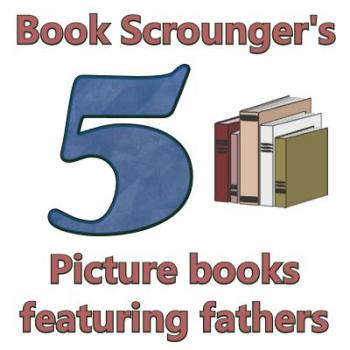
Since Father's Day is coming up, I thought it would be nice to collect some favorite picture books of ours that prominently feature father characters. Here are some of the best (in no particular order):
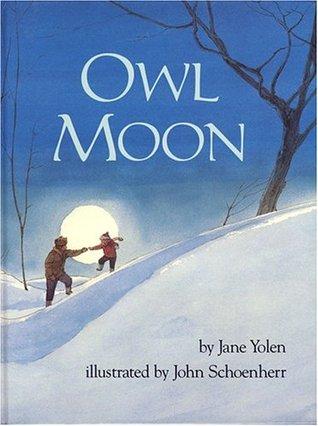
1. Winner of the Caldecott Medal in 1988, Jane Yolen's Owl Moon is the winter story of a father and daughter out for a quiet nighttime walk through the woods to see if they can see an owl. They're hoping for one as they give out the owl call, but as the girl has been told, "sometimes there's an owl and sometimes there isn't." Even though the father and daughter don't share many words, their shared experience is a picture of the many different forms that love can come in.
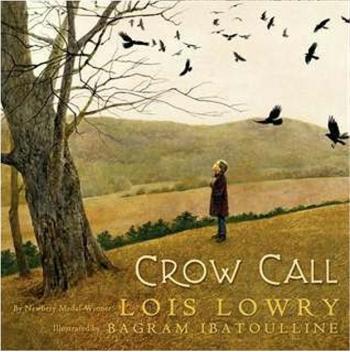
2. Speaking of fathers, daughters, and calling for birds, Crow Call, written by Lois Lowry (of The Giver series fame), also tells the story of a father and daughter who go for a walk in the woods looking for birds (though in this case they're hunting). Based on Lowry's own childhood, this book depicts a girl named Liz reconnecting with her father after his long absence in World War II. With lovely, realistic images by Bagram Ibatoulline, this story touches on several different themes, and ends with the hope that even a lapsed relationship can have a chance to begin again. It also makes a great autumn story.
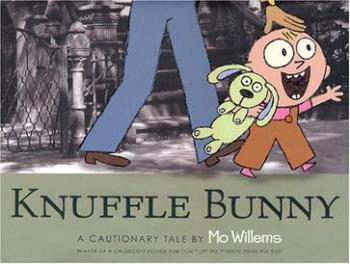
3. I really like the artwork in Knuffle Bunny by Mo Willems. It consists of black-and-white photographs of urban locations, with cartoonish characters drawn over them. Trixie is a little girl who goes to the laundromat with her father, and inadvertently leaves her cherished Knuffle bunny there. She realizes this during the walk home, but since she can't talk, she has to find other toddler-level ways to attempt to communicate this fact to her father. Parents will probably all be quite familiar with this kind of toddler behavior, as well as the hero daddy who saves the day by simply recovering a beloved toy.
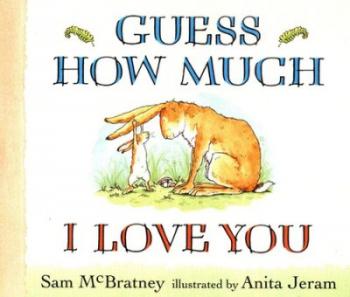
4. One thing I like about Guess How Much I Love You is that it's the only book in this list that's specifically a father/son story. And I also really like that it's just about how much they each love each other. Both Big and Little Nutbrown Hare use a variety of physical activities and distances to try to demonstrate the extent of their love -- and I think, in the end, the consensus must be that love is simply too big to measure.
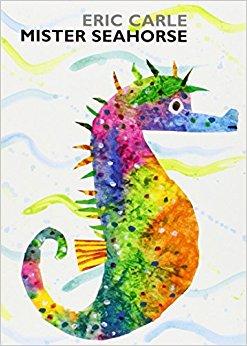
5. While the text of Mister Seahorse is fairly repetitive, Eric Carle's colorful illustrations are magnificent as always (I love the hippie-looking seahorses), and the book also includes some partially transparent pages with fish hiding behind them, which is fun for kids. I also like this book because it depicts several different species of fish in which it is the male that cares for the eggs (and sometimes even after they hatch), rather than the female. In a world where parent/child animal stories are often dominated by mothers, it is nice to see this exception, especially since it's based in fact!
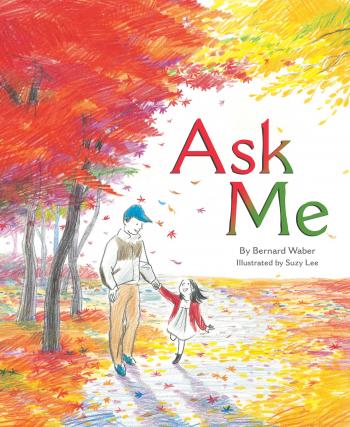
Bonus: in some ways Ask Me is very opposite of Owl Moon in that the father and daughter do not have to be quiet -- in fact, the daughter is quite the chatterbox. The whole text of this story by Bernard Waber contains the back-and-forth musings, questions, and answers between a father and his talkative young daughter, aided by Suzy Lee's expressive and colorful illustrations.
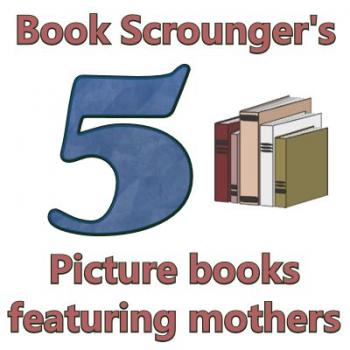
Since Mother's Day is coming up, I thought I'd collect a few favorite picture books that feature mothers. Of course, lots of books contain mother characters somewhere, especially books that are family focused. These specifically stood out as making the mother a major character in the story.
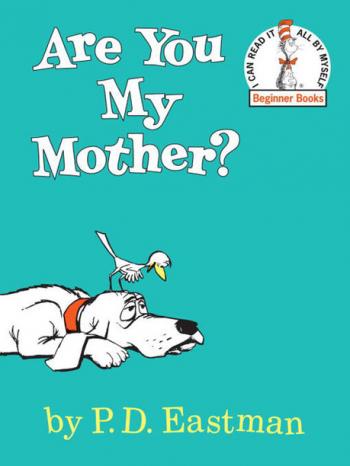
Are You My Mother?, by P.D. Eastman, is a classic that's been around since before I was born. I read it to siblings and now read it to my own kids -- several generations have enjoyed this story of the young bird hunting for his mother who, unbeknownst to him, flew off just before he hatched to find a worm for him. He gradually establishes that the hen, cat, dog, and cow are not his mother, and then moves on to inanimate objects, culminating with -- the "snort"! Young readers are often excited when he is finally reunited with his mother at the end.
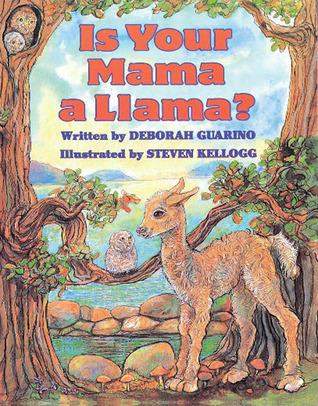
Is Your Mama a Llama?, by Deborah Guarino, is another fun preschool book featuring lots of different mother/baby animal duos, introduced in well-written rhyming text. Each animal that Lloyd the llama encounters gives him a few clues about who their mama is -- following the rhyme and the pictures will probably make most of them easy for children to guess. This is another one that I've read both to siblings and to my own kids.
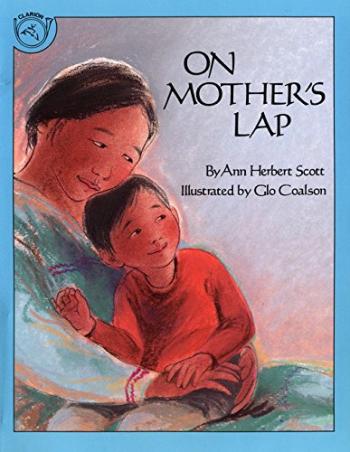
A great book for growing families, On Mother's Lap, by Ann Herbert Scott, communicates a mother's unending love not only for a "new baby," but also for the first child to reassure them that they are loved just as much. The older brother in this simple story is a bit unwilling to share his mother's lap with a baby sibling (though this is not explicitly stated, a bit of jealousy can be inferred from his actions). But she reassures him that there is always room on mother's lap as she rocks both of her children together. While also not explicity stated, this story is set in an Inuit village.
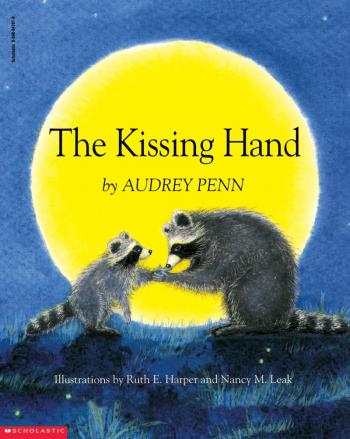
This bestseller is a popular read-aloud for children who are going off to kindergarten for the first time. The Kissing Hand is the story of a mother raccoon who helps her baby cope with being away from her by giving him a kiss in his hand. That way, he can keep it with him and bring the kiss out whenever he misses her or needs a little encouragement. Very heart-warming, and even though we homeschool this is still such an important aspect of love to communicate to children.
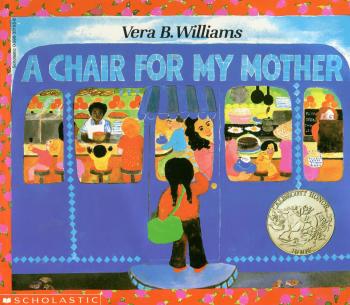
A Chair for My Mother, by Vera B. William, is geared toward older children than the others on this list, but I like how it captures a realistic situation in a low-income community and shows a mother and daughter working to better their lives, bit by bit. After a fire destroys their home, Rosa and her mother and grandmother collect coins to buy a nice comfortable chair for Rosa's mother. She works as a waitress and spends a lot of time on her feet, so when she comes home at the end of a long day, she wants a nice place to rest. After they save up enough money, they get to reap the benefits of their labors and pick out a chair that is just right for all of them.
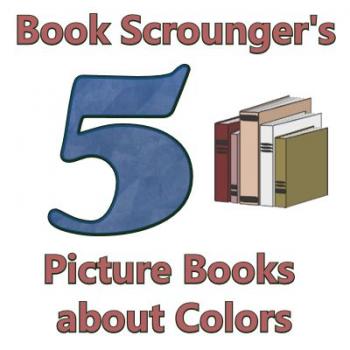
I've already made a list about books geared toward art in general, but this one is specifically about colors. Of course, there are many many picture books that introduce colors to children, some based on particular themes that may be more exciting to some children than others. These are just some of our personal favorites out of the many fun and useful books out there.
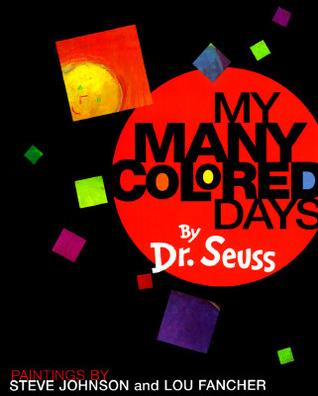
Even though I grew up with Dr. Seuss books, it wasn't until I was an adult that I realized he had produced a "colors book" as well. However, My Many Colored Days does not contain his trademark Seussical illustrations -- instead, the manuscript of this poem was illustrated by Steve Johnson and Lou Fancher, and not published until after Seuss's death. What results is a vibrant celebration of color and emotion, as each color has a particular feeling paired with it -- from happy and energetic to low and upset, the colors help to visualize an animal embodying something about each emotion. But in the end, the book emphasizes that "I'm still me" through all of it.
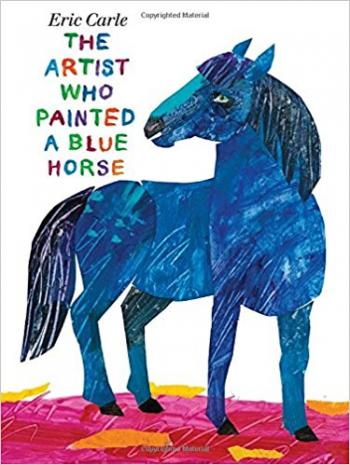
From another well-known children's book author, The Artist Who Painted a Blue Horse is Eric Carle's tribute to German painter Franz Marc. While nothing is said of Marc in the text, there is a short informational paragraph about him at the end. Carle encountered Marc's work while growing up in Germany -- Marc was one of many "degenerate" artists whose work was banned by the Nazis, and one of his more famous paintings is of a blue horse. This book includes animals drawn in all the "wrong" colors -- a purple fox, an orange elephant, etc. It is a way of encouraging children to not let conventional expectations limit their art. For another colorful book of animals illustrated by Carle (mostly conventionally), see also Brown Bear Brown Bear What Do You See?. Also, while it's not a "colors book," Carle's Animals Animals pairs his vibrant illustrations with sayings and poems about many different animals (most conventionally depicted, this time).
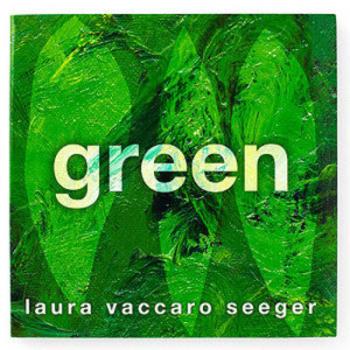
While Green is not a regular colors book that depicts every major color, it also doesn't limit itself entirely to green either. Many shades are explored here -- from jungle green to "shaded" green (trees). Also, each page includes clever cut-outs that become very different things on each side of the page. Not only that, but the paintings are lovely, full of textured detail. See my full review here.
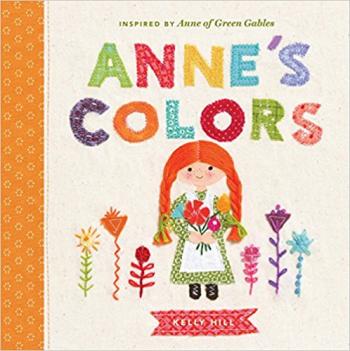
For those who are fans of L.M. Montgomery's Anne of Green Gables series, Anne's Colors is a beautiful celebration of major scenes from the first book, as a means of introducing colors. The illustrations were created with fabric and embroidery, which adds some texture and life to Anne's world. We get to see a brown dress (with puffed sleeves, of course), red cordial, blue sky, etc. See my full review here.
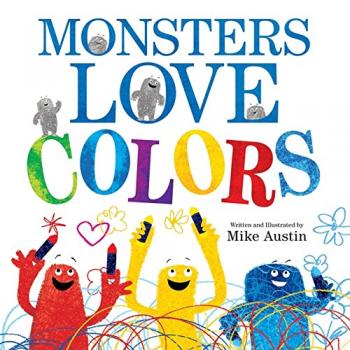
For children who enjoy monsters, Monsters Love Colors, by Mike Austin, is an exuberant (and of course colorful) celebration of colors and how fun it can be to color with them and mix them up. This book uses monsters to show how the primary colors can be mixed to create the secondary colors, and that when they're all together, they make a beautiful rainbow. For kids who don't like monsters (or just for a more subdued book with a similar premise), see Mouse Paint, which demonstrates the same mixing of colors.
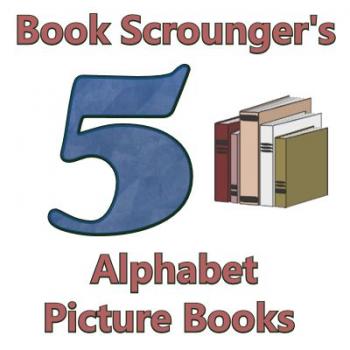
We've encountered many, many alphabet books so far -- some better than others -- but most do a great job introducing the alphabet using familiar (or strange) objects or ideas. Here are some of the most memorable ones we've read:
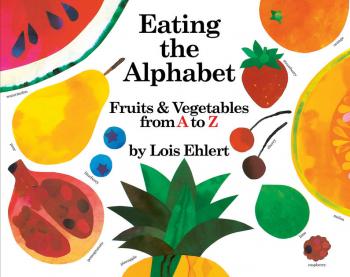
This is probably my favorite Lois Ehlert book. I love food, and being a "list person" anyway, found Eating the Alphabet to be a very engaging, colorful way to teach children about various fruits and vegetables that start with every letter of the alphabet. While it doesn't purport to teach colors as well, it could certainly function as a color reminder/primer as well. Visually appealing, and makes you hungry!
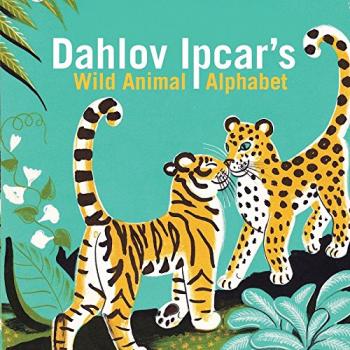
I don't know how popular artist Dahlov Ipcar is outside of Maine, but I know that I really love her artwork style, especially when animals are involved, so we've really enjoyed this colorful board book of animals for every letter of the alphabet, complete with rhyming text. The Wild Animal Alphabet includes animals in the wild, but also a few doing anthropomorphized things like sewing or banging on drums.
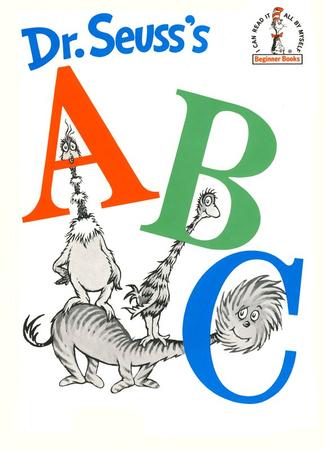
It's a popular one, but Dr. Seuss's ABC is another favorite due to the silly rhymes and odd characters and words that it introduces (like a fiffer-feffer-feff or a zizzer-zazzer-zuzz!). It also takes its time and periodically reviews the alphabet up to the current point (at least in the hardcover version -- the board book is fairly abridged).
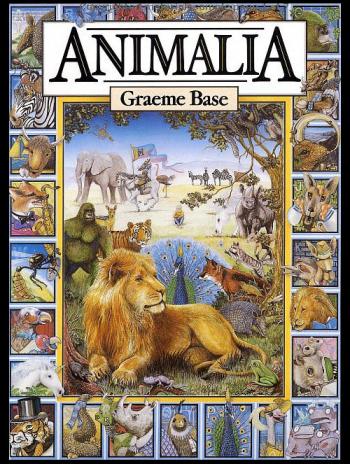
Animalia is not only my favorite alphabet book, but it's one of my favorite picture books, period. Not only does each letter have a clever sentence about an animal doing something alliterative with that letter, but the illustrations include many hidden (and some more obvious) items that also begin with that letter. Even after many readings I'm sure I haven't found them all! Full review here.
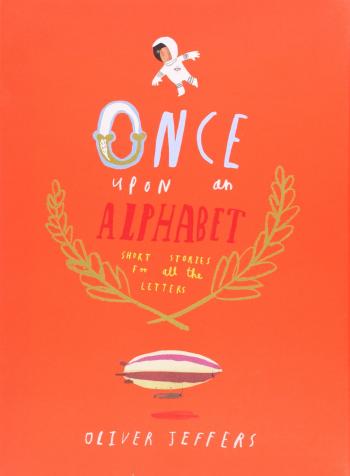
This is one of the weirder alphabet books I've come across, but it's certainly unique. Once Upon an Alphabet is a quirky book with a succinct "story" about each letter of the alphabet, which includes at least a few other things that begin with that letter. Some of the stories are connected and get referenced later on, but others are stranger and some even a bit dark. It won't be everyone's cup of tea, and is probably geared more toward children who are quite old enough to already know their alphabets, but it's still fun and funny at times.
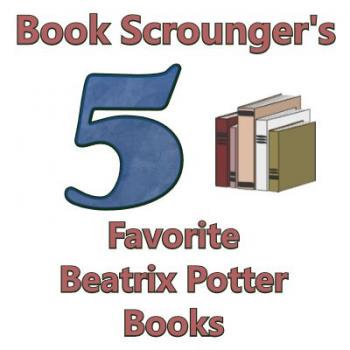
Beatrix Potter books are classics that many of us grew up with -- I can remember bits and pieces of them from early on, especially from a large treasury we had. One thing I notice is how different they are from your typical picture books nowadays -- while the animals are very much anthropomorphized, they display a more shrewd and realistic view of the dangers of life than books tend to now. More than one of these stories involves an animals barely escaping from death at the hands of another animal.
Of all the Potter books I've enjoyed, here are my five favorites (in no particular order):
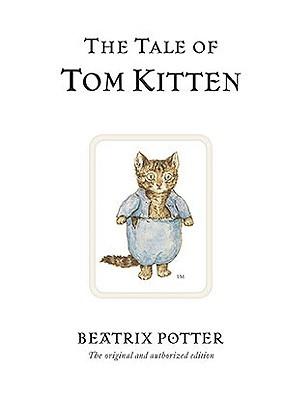
1. Tom Kitten appears to be a story about the perils of trying to dress kittens up in human clothes, as attempted by a mother cat who also wears human clothes -- so perhaps it's really just about the boundless curiosity of children that refuses to be contained with pieces of frippery. Either way, I find it amusing in its matter-of-fact descriptions of how the whole affair falls apart. I've also included this in my 5 picture books featuring cats list.
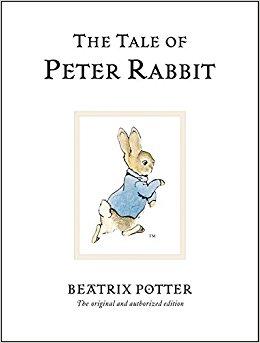
2. Peter Rabbit pretty much IS Beatrix Potter, as far as many of us know. So much so that it can be hard to find a basic, original copy of this story since it's been adapted into so many other forms since it's been published. He's become a nursery theme, stuffed animals, and apparently a movie now, the idea of which I find even more terrifying than Mr. McGregor. Full review here.
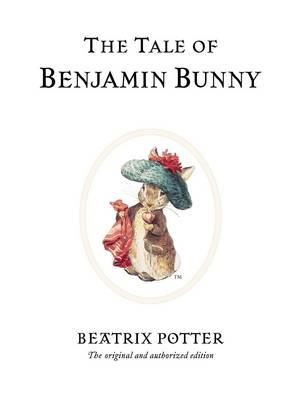
3. Benjamin Bunny is the follow-up to Peter Rabbit, and involves an amusing contrast between the optimistic inexperience of Benjamin vs. the wide-eyed PTSD of Peter. Their experience in McGregor's initially lacks the excitement of the Peter Rabbit story, until Benjamin's father shows up. Full review here.
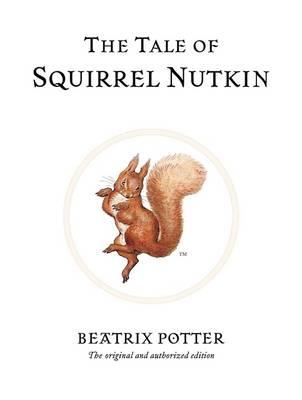
4. I've always enjoyed Squirrel Nutkin, not only for the interesting riddles it includes, but for the build-up of Nutkin's continuous "impertinence" (as the book puts it) toward Old Brown, the owl (in modern terms, he was an obnoxious twat). There is a certain sense of foreboding of what is eventually going to happen, and once again, Beatrix Potter does not hesitate to physically injure her characters in order to portray the dangers of overstepping the boundaries of nature.
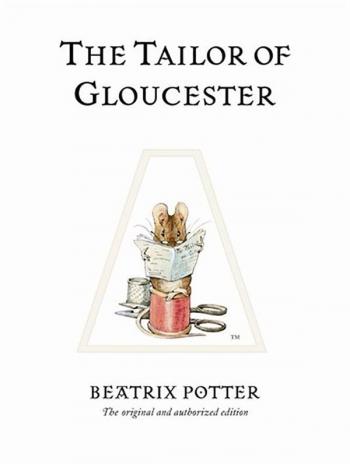
5. The Tailor of Gloucester is wordier than most of the other Potter tales, and so might appeal more to older children, but I really enjoyed it as a child, especially after watching an animated BBC version of the story (which retained the declaration, "No more twist!"). I remember feeling so bad for the tailor, and appreciated a story in which animals did something intelligent and helpful. It also makes a nice Christmas story, although the holiday itself doesn't play a major part in the book.


